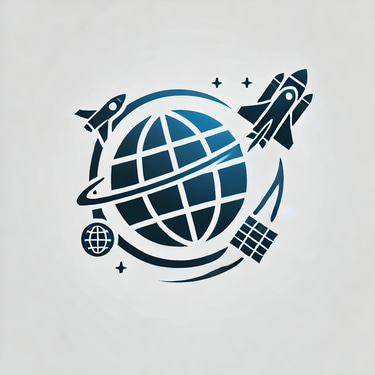From Backyard Launches to Mars Missions: How TARC Builds the Next Generation of Aerospace Innovators
We explore how The American Rocketry Challenge (TARC) provides high school students with hands-on experience that mirrors real-world aerospace engineering. Drawing from my team’s journey, I highlight the technical challenges, design lessons, and problem-solving skills that make TARC a great opportunity for future innovators.
STEM & STUDENT PROJECTS
Vince Sanouvong
2/14/20256 min read


What is The American Rocketry Challenge (TARC)?
The American Rocketry Challenge (TARC) is a prestigious national competition established in 2003 to engage students in the field of aerospace engineering. It offers students a unique opportunity to explore aerospace engineering through hands-on competition. The competition involves designing, building, and launching model rockets while adhering to specific objectives like altitude and total flight time.
TARC is a significant platform for aspiring aerospace engineers, allowing them to use their skills to compete with others. Students meet various objectives throughout the competition, such as achieving a specific altitude or carrying payloads, such as eggs, securely back to the ground. These requirements challenge students to think analytically, mirroring skills essential in the aerospace industry. Moreover, the competition promotes STEM (science, technology, engineering, and mathematics) education, inspiring the next generation to consider careers in these fields.
TARC had 700 teams in 2023; as of 2024, they have around 1,000 total teams. As they evolve, they continue to inspire and produce more STEM-focused students.
My Journey Through TARC
Participating in the American Rocketry Challenge (TARC) was a transformative experience that opened my eyes to the complexities of aerospace engineering. I was excited to take on a leadership role when I first created the team. Me and my other three team members and I were all passionate about aerospace engineering and eager to apply our knowledge in a practical setting. The thrill of designing and testing a competition rocket was amazing and and our aspirations were high; however, we were soon to discover that the road to success in TARC was filled with challenges.
The design phase of our rocket was daunting. We had to learn about the center of pressure, ejection charge, and dual-deployment system. We faced numerous obstacles, including budget constraints and limited resources, which forced us to learn how to work with what we had. Our initial design had to be revised multiple times due to issues like stability concerns and the fragility of the fins. We could rely on each other's strengths to develop effective solutions.
One of the most significant hurdles we encountered was during the testing phase, specifically with the parachute deployment. After numerous attempts, only one of our parachutes deployed properly. We needed the payload chute to deploy to ensure our eggs would not crack. It led to many broken rockets and having to restart from scratch. These failures were disheartening but also valuable learning opportunities for the entire team. We regrouped, discussed what went wrong, and sought advice from mentors, which TARC provided a list for us. Such experiences taught us not only about technical problem-solving but also about resilience in the face of failure.
Through TARC, I gained invaluable insights into the aerospace field and developed essential teamwork, problem-solving, and project management skills. This journey was more than just about competing against others, but it was about personal growth and embracing the process of exploration in aerospace engineering.
Team Dynamics: Collaboration and Communication
The American Rocketry Challenge (TARC) serves as a platform not only for technical skill development but also for the enhancement of teamwork and collaboration among aspiring aerospace engineers. Effective teamwork is essential in TARC, as it creates a synergy that fosters a more comprehensive design process for rocket building. Each member brings unique skills and perspectives, thus enriching the team's overall capabilities. Collaborative efforts allow team members to share ideas, troubleshoot potential issues, and innovate effective solutions, ultimately leading to a successful launch.
In the context of TARC, communication plays a pivotal role in ensuring the smooth flow of information amongst team members. Clear communication helps establish expectations, delegate responsibilities, and provide constructive feedback throughout the design and building phases. Utilizing various communication strategies, such as regular team meetings, online collaboration tools, and progress updates, facilitates transparency and allows teams to track their advancements collectively. Additionally, the use of digital platforms enhances interactivity, enabling members who might not be physically present to contribute meaningfully to discussions.
The organization of roles within the team contributes significantly to the effectiveness of collaboration. Each member often has specific responsibilities based on their strengths and interests, whether in design, testing, analysis, or outreach. This structured approach helps maximize efficiency and encourages accountability among team members. However, conflicts may arise due to differing opinions or objectives. Addressing these disputes through open discussions not only resolves issues but also cultivates a culture of trust and respect. By navigating conflicts thoughtfully, teams can harness differing viewpoints to spark creative ideas that lead to improved designs.
In summary, the emphasis on teamwork in the American Rocketry Challenge illustrates how effective collaboration and communication among members can significantly enhance the design process, foster innovation, and ultimately strengthen bonds within the team, preparing them for future endeavors in the aerospace engineering field.
Real-World Engineering Skills Gained from TARC
The American Rocketry Challenge (TARC) offers a unique platform for aspiring aerospace engineers to gain valuable, hands-on experience that closely resembles the processes encountered in professional engineering environments. At the core of this competition lies the opportunity for participants to engage in rigorous testing, which is a fundamental aspect of engineering. Each team is tasked with designing and constructing a model rocket that must adhere to specific guidelines while achieving set performance objectives. This mirrors the practical challenges engineers face when conducting experiments to meet project requirements.
Throughout the TARC experience, teams must confront failure analysis, a critical skill in engineering. When a rocket fails to perform as expected during test flights, students must analyze the causes. This necessitates a systematic approach to identifying problems—skills that are transferable to professional settings where engineers are required to debug products or systems. For example, if a rocket does not reach the desired altitude, team members must investigate whether issues stemmed from design flaws, material defects, or even errors in assembly. This analytical process fosters critical thinking and fosters resilience, echoing the iterative nature of aerospace project development.
Moreover, TARC encourages ongoing design refinement based on test results. Participants gain experience in the design-build-test cycle, fundamental to aerospace engineering. After each test flight, teams are prompted to reassess their designs based on performance data. This iterative design approach emulates the real-world requirement for engineers to continuously improve their projects based on empirical evidence, ensuring safety and efficiency in aerospace applications. Thus, the skills garnered from the TARC competition prepare students for academic success and equip them with the practical knowledge essential for professional careers in aerospace engineering.
Industry Relevance: Qualifications Beyond the Classroom
The aerospace industry has continually evolved, driven by technological advancements and a growing demand for skilled professionals. Companies such as Boeing, NASA, and various innovative startups place a premium on candidates with academic qualifications and practical experience. This dual requirement is becoming increasingly critical in a landscape where theoretical knowledge alone may not suffice. One notable opportunity for students to enhance their practical capabilities is participating in programs like the American Rocketry Challenge (TARC).
TARC allows aspiring aerospace engineers to apply theoretical concepts in a real-world context, facilitating a deeper understanding of rocketry and aerospace principles. Participation enables students to navigate hands-on challenges that mirror the complexities faced by professionals in the industry. This experience fosters essential skills such as problem-solving, teamwork, and design iteration, which are invaluable within the aerospace sector.
Employers within this field often look for candidates who possess technical knowledge and demonstrate an ability to innovate and adapt under pressure. TARC contestants can differentiate themselves from their peers by showcasing their hands-on experience in rocketry. With the aerospace industry demanding creativity and critical thinking, the practical skills gained through TARC are highly regarded. For many participants, this experience becomes a launching pad for future roles, as it prepares them for real-world challenges they are likely to encounter in the workplace.
Furthermore, the collaborative nature of TARC helps students develop essential interpersonal skills that are crucial in any professional setting. Networking opportunities during competitions also allow students to connect with industry professionals, fostering relationships that can aid in career advancement. Thus, involvement in TARC not only enhances technical proficiency but also builds a compelling profile that attracts the attention of potential employers in the aerospace industry.
The Future of Aerospace Engineering
The American Rocketry Challenge (TARC) stands as a transformative experience for many participants, shaping their technical skills, problem-solving, and teamwork. For aspiring aerospace engineers, TARC provides an invaluable platform to apply theoretical knowledge to practical situations, fostering a unique blend of creativity and analytical thinking. Through the challenges presented in rocketry, students not only grasp essential engineering concepts but also develop a resilience that is crucial in the aerospace sector.
Moreover, TARC emphasizes the importance of hands-on engineering challenges in the broader context of professional development. Engaging in such competitions encourages students to navigate real-world engineering obstacles, instilling a sense of innovation and adaptability. As future engineers encounter the complexities of aerospace projects, the skills honed through TARC can prove instrumental. This experience lays a sturdy foundation, equipping students with the necessary tools to excel in their careers.
Moreover, participating in programs like TARC promotes collaboration among peers, a vital aspect of career success in aerospace engineering. The synergy between students during their rockets' design, testing, and evaluation phases nurtures essential team-working capabilities and enhances communication skills. As the aerospace industry continually evolves, the ability to work effectively in diverse teams will be paramount.
In light of these benefits, aspiring aerospace engineers must seek out opportunities similar to TARC actively. Engaging in hands-on challenges enriches their educational journey and elevates their prospects within an industry that thrives on innovation and performance. As they prepare for their futures, these experiences will serve as critical stepping stones toward fruitful careers in aerospace engineering.
